
Camphor Hydrosol & Essential Oil Manufacturer & exporter in India
Aadhunik Ayurveda is the best 100% natural camphor hydrosol & essential oil manufacturer & supplier in India located in himalayan foothills. Camphor, popularly known as kapur, is a chemical naturally derived from the wood of camphor trees, scientifically known as Cinnamomum camphora. It has a strong aroma & taste. Kapur is known for its many therapeutic benefits and is a strong air purifier with antifungal & antibacterial properties. Therefore camphor is used extensively in therapeutic camphor oil wholesale products such as pain relieving balms, skin healing balms, general camphor oil for skincare products, including religious ceremonies etc.
Being a GMP certified cosmetic manufacturer India and FDA approved skincare manufacturer India, Aadhunik ensures global quality standards for domestic and ayurvedic product manufacturers for export.
What is Camphor Essential Oil?
Camphor essential oil & camphor hydrosol is extracted through steam distilled camphor oil of the various parts of the camphor tree like leaves, stems to create camphor water & oil. However, many modern camphor products contain synthetic camphor oil, derived from terpene, usually a petrochemical.
Camphor has a breathtakingly strong, woody aroma. It can be found in all sorts of medicinal and herbal remedies, from decongestants to muscle rubs. Camphor oil is readily absorbed by the skin, making it an invaluable topical solution to your aches and pains.
Aadhunik Ayurveda is the best camphor essential oil manufacturer in India, supplier, & wholesaler of camphor hydrosol & essential oil. This steam distilled camphor oil is 100% free from chemicals with no added preservatives and has therapeutic properties. We also lead as a herbal extract manufacturer India and bulk cosmetic ingredient manufacturer India, delivering purity at its best.
Types of Camphor
There are four distinct fractions of camphor oil: white, brown, yellow, and blue camphor. White camphor is the form that is used for aromatherapy and other products. Yellow and brown fractions often contain the carcinogen safrole and are generally unavailable.
Uses of Camphor
Camphor has many uses because of its a ntibacterial and antifungal properties. It is used in various beauty and pharmaceutical products. It has a cooling effect on the skin. Most of the camphor products are available in the form of sprays, cream, ointments, or balm. It is also a major ingredient in mosquito repellents. The uses of camphor are
- Treats skin condition
- Relieves pain, especially headaches
- Enhances the respiratory function
- Relieves cough and blockage of nose
- Relieves muscle spasms, cramps, and stiffness
- Treats fungal infections on skin and toenails
- Control hair fall, reduce dandruff & promote camphor hydrosol for hair health
Private label camphor product manufacturer in India
Aadhunik Ayurveda is the preferred private label camphor products manufacturer of skin care products which uses many plant based ingredients to gain desired action in the product and one of them is camphor. Camphor can be used in the form of camphor water that is distilled camphor hydrosol and oil that is distilled camphor essential oil. The use of camphor water or camphor essential oil depends on the purpose of the product and thereby the consistency is chosen - balm, serum, cream, oil, mask etc. Hence you will many private label products at Aadhunik Ayurveda for your use -
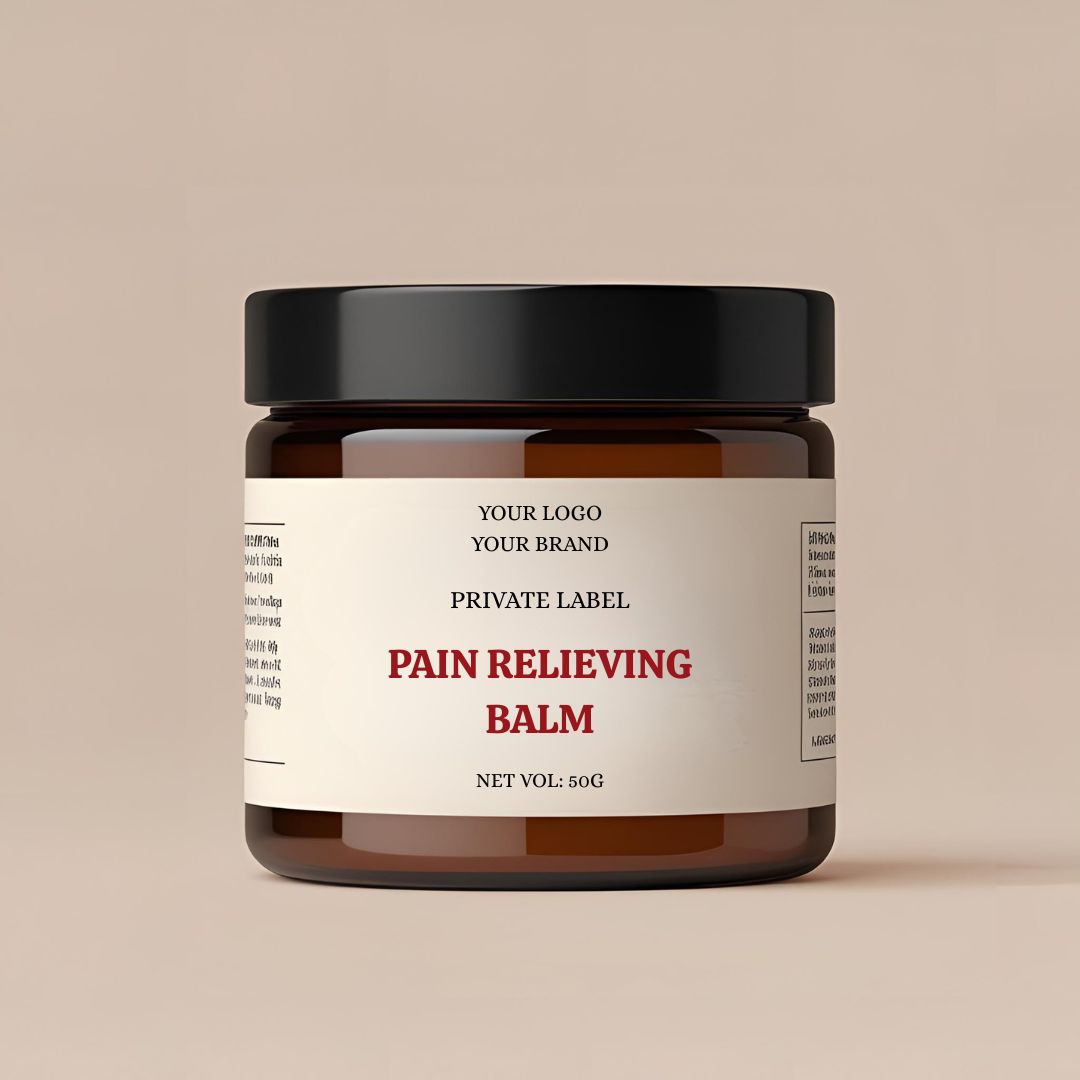
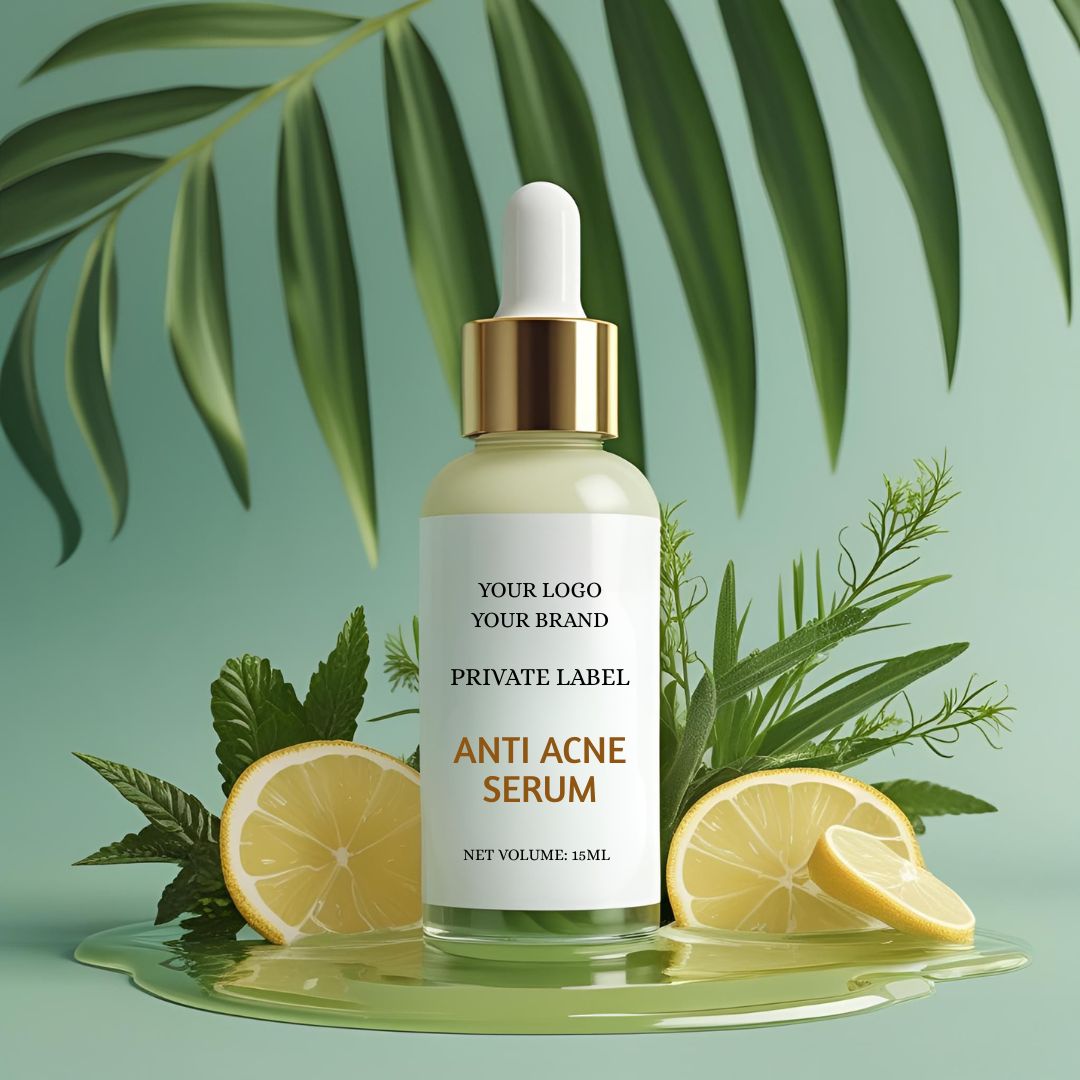
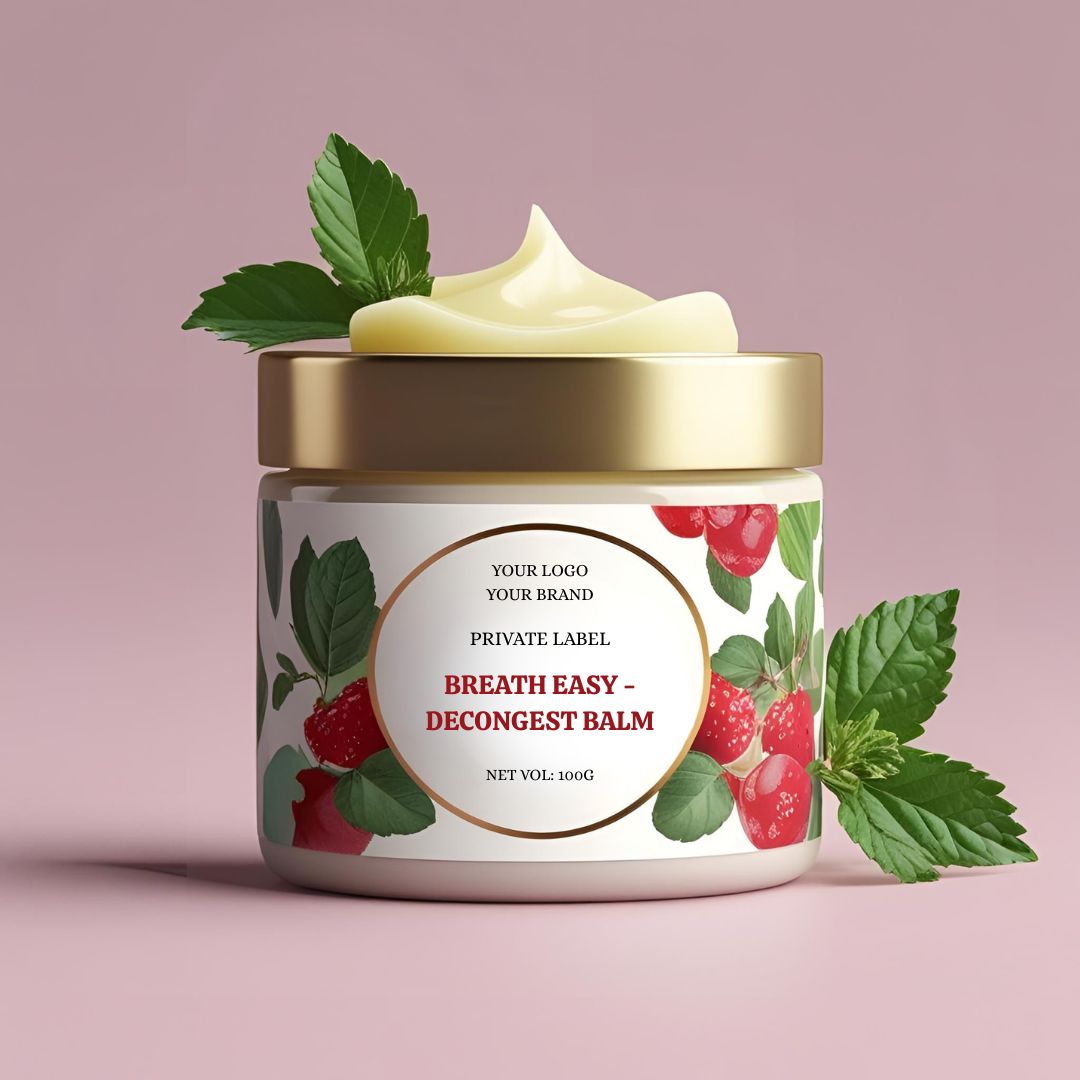
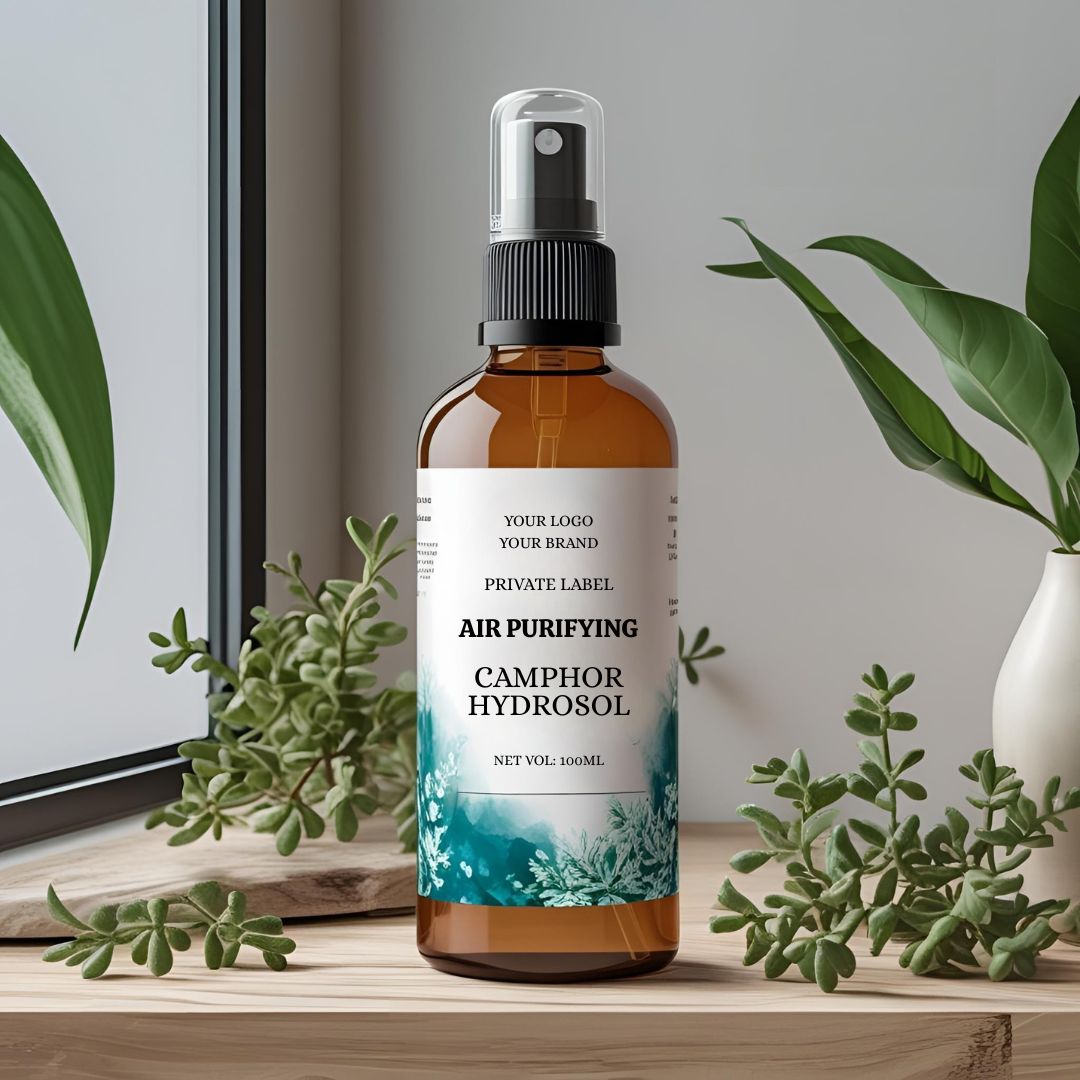
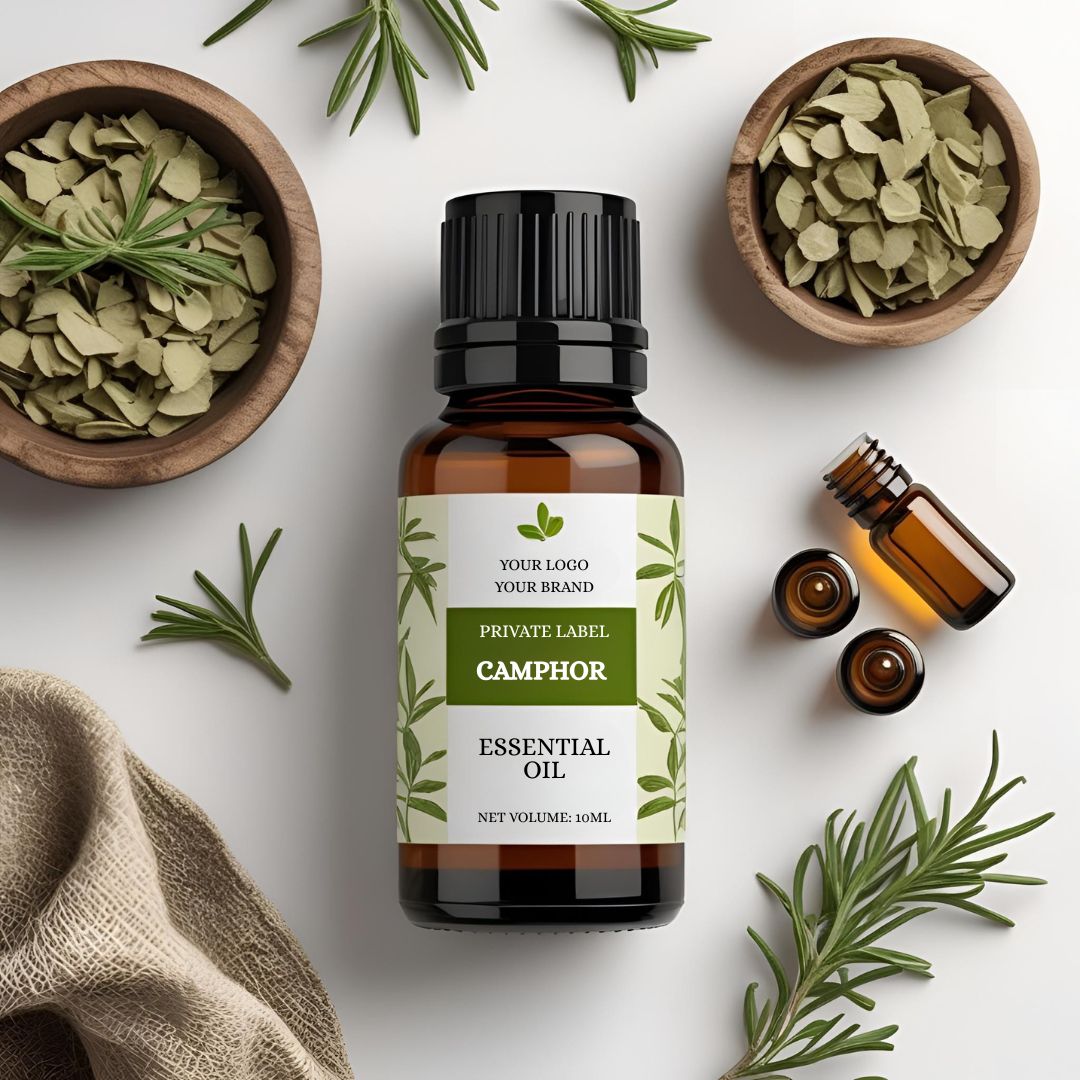

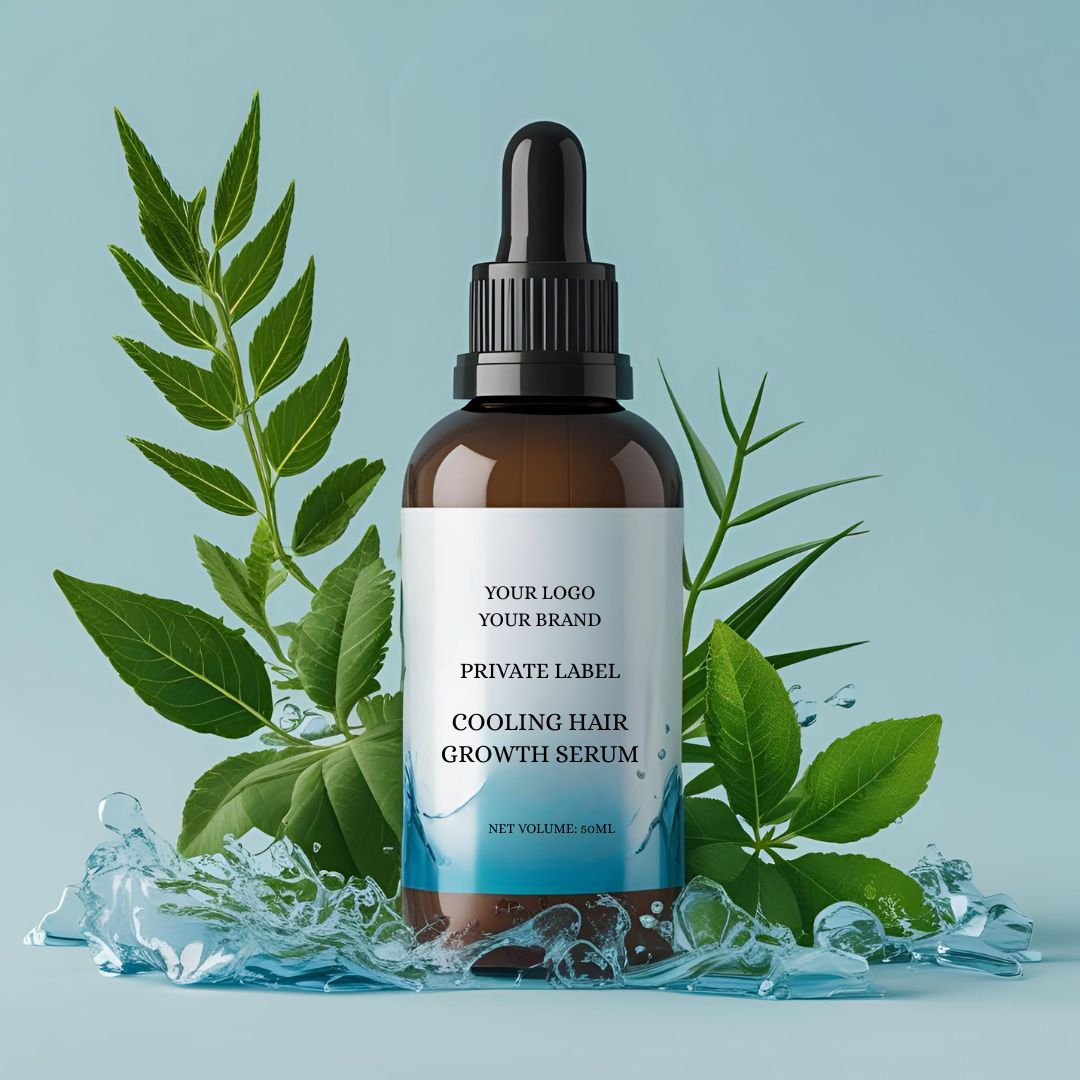
As a leading organic beauty products manufacturer India, we customize products using the best natural ingredients sourced responsibly, ensuring each product meets the standards of an ayurvedic raw material supplier India and a trusted raw ingredient supplier for skincare.
Best Manufacturer and supplier of Camphor Essential Oil in India
Aadhunik Ayurveda is the best top camphor essential oil manufacturer in India & hydrosol supplier India. It is the only manufacturer that makes use of our traditional clean technique of making herb water & essential oil whom you can trust for quality as you can always watch the dripping essential oils & hydrosol in the world class distillery.
This chemical-free steam distilled camphor oil making technique positions Aadhunik Ayurveda the only manufacturer, wholesaler and 100% natural camphor oil exporter India that offers pure plant-based camphor hydrosol & camphor essential oil in India. The same facility also operates as a leading carrier oil manufacturer India and cold pressed oil manufacturer India, meeting holistic health and beauty needs.

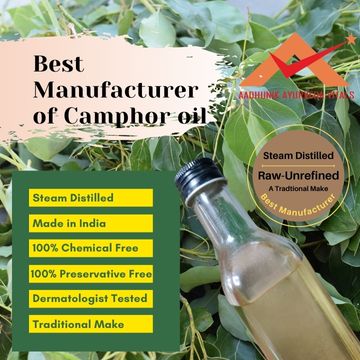
Making of Camphor Essential Oil at Aadhunik Ayurveda
At Aadhunik Ayurveda fresh camphor leaves are steam distilled using ancient techniques to make camphor essential oil. The process gives complete natural camphor oil with no addition of synthetics.
And therefore, a drop of essential oil is purely the volatile ark of camphor in the form of oil; hence it is very powerful and concentrated, containing the oil-soluble nutrients of camphor in it. Likewise, the hydrosol of camphor contains the water-soluble nutrients of camphor in it.
So at Aadhunik Ayurveda, we work with the practice of zero waste because the plant parts left after the distillation are used as a natural pesticide in farming.
Watch the making of camphor herb water and camphor essential oil at Aadhunik Ayurveda.
Sustainability and ethical sourcing of camphor leaves and stem
At Aadhunik Ayurveda we make use of camphor leaves only and collect leaves from trees planted in the backyard of many houses in the himalayas. Every year as a routine the households shed some part of the tree as a tree lopping exercise and we collect the same. This collected material is used in the distillery and also the leaves are dried to make camphor powder which again is used in many products. Aadhunik Ayurveda always works with focus on preserving the environment and therefore never uses camphor trunk or roots to steam distil the hydrosol and essential oils.

COA of Camphor Hydrosol
Physico-chemical and Phytochemical Study & Microbial Analysis of Camphor Hydrosol
Abstract: Camphor tree (Cinnamomum camphora) is an ornamental plant that has been cultivated for a long time to obtain wood or camphor. Furthermore, its hydrosol/aromatic water can be used as an alternative medicine and is an important source of perfume.
Camphor obtained from camphor trees has long been used as a treatment for various symptoms such as inflammation, infections, congestion, muscle pain, and irritation in various regions.
Introduction
Cinnamomum camphora is a large evergreen tree. The leaves of camphor leaves a glossy, waxy, appearance & smell of camphor when crushed.
Modern studies have found that the main chemical constituents from camphor hydrosol were flavonoids, tannins, glycosides etc.
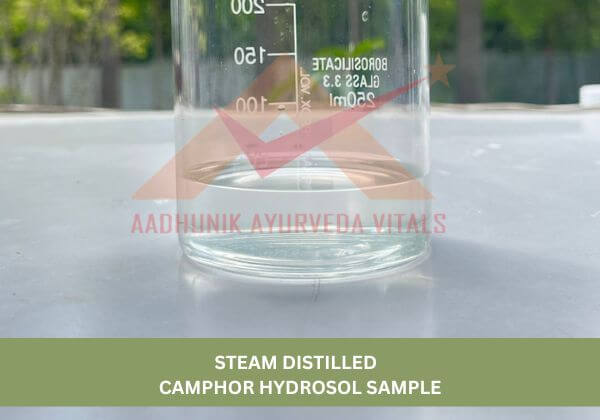
The biological activity of camphor has mainly demonstrated anti-bacterial, anti-oxidation, anti-inflammatory and analgesic.
The aim of present study is to evaluate the herbal waters/ hydrosol of Camphor leaves obtained as innovative commercial products of a steam distillation process.
The following tables provide records on the most commonly tested physico-chemical, phytochemicals, and Microbiological evaluation in Camphor Leaves Hydrosol.
| Product Name | Camphor Leaves Hydrosol/Herb Water |
| Botanical Name | Cinnamomum camphora |
| Manufacturing Process | Steam distillation only |
| Part Used | Stems and leaves |
| Produce | 100% chemical & preservative free |
| Usage | Health & Wellness, & Aromatherapy |
| Cultivation | Parts of India |
Experiment
The aim of this work is done to analyse the physicochemical, phytochemical and microbial activity test of Camphor leaves hydrosol.
1.1 Physico-chemical Analysis of Camphor Leaves Hydrosol
Various physico-chemical parameters of Camphor leaves hydrosol were analysed which were important for production of value added products.
Result of physicochemical attributes of analysis in a sample of Camphor Leaves Hydrosol
| Properties | Specifications | Results |
| Physical Appearance | Transparent liquid, like water | Conforms |
| Colour | Clear colorless to slightly liquid | Conforms |
| Odour | Fresh, penetrating, powerful camphoraceous and mild cinedic aroma | Conforms |
| Solubility | Soluble in water & alcohol, insoluble in fat/fixed oilss | Conforms |
| pH(25°) | 5-7 | 5.16 |
| Acid Value | 0.04% | Conforms |
| Refractive Index | 1.480-1.510@20° | 1.495 |
| Specific Gravity 9g/ml) | 0.875-0.930@25° | 0.897 |
1.2 Total Presents of Components
| Components | Range % | % |
| Camphor | NA | 24.35% |
| Limonene | NA | 2.99% |
| Linalool | NA | 0.19% |
1.3 Heavy Metals Test Result
| Heavy Metal Test | Specification (%) | Result(%) |
| Arsenic (As) | NA | Not detected |
| Lead (pb) | NA | Not detected |
| Mercury (Hg) | NA | Not detected |
| Cadmium (Cd) | NA | Not detected |
| Copper (Cu) | NA | Not detected |
1.4 Result of Phytochemical Analysis of Camphor Leaves Hydrosol
The following result were obtained after performing the phytochemical test:
This method includes the selective and successive extraction of the plant phytochemical. The analysis of the presence of the main group of natural constituents present in the plant extract was done using different specific reagents. Chemical tests were done to identify bioactive compounds of pharmacological importance through standard methods. Phytochemicals such as below were qualitatively determined
| S.No. | Phytochemical Tests | Sweet lime Hydrosol Specification | Results |
| 1. | Flavonoid | Highly presence of red colour | (+ve) |
| 2 | Tannin | Highly presence of greenish colour | (+ve) |
| 3 | Cardiac glycoside | Slightly presence of brown ring | (+ve) |
| 4 | Steroid | Highly presence of yellow-greenish fluroscence colour | (+ve) |
| 5 | Anthraquinone | No presence of pinkish colour, which immediately change in blue/violet colour | (-ve) |
1.5 Result of Microbial Analysis of Camphor Leaves Hydrosol
| Microbial | Specification | Results |
| Aerobic Mesophilic Bacterial Count | <100 CFU/g | Conforms |
| Yeast and Mould | <10 CFU/g | Conforms |
Description
- Appearance- The Camphor leaves hydrosol/aromatic water is in a liquid form similar to water. That is because it is soluble in water.
- Colour- The camphor leaves hydrosol is a clean, colourless slightly cloudy liquid.
- Odour- The odour of Camphor hydrosol is derived from the leaves of a Camphor plant. The odour of Camphor aromatic water has a fresh, penetrating, powerful camphoraceous and mild cinedic aroma. However the aroma/odour changes from season to season with variety in its volatile compounds due to various factors like - temperature, rainfall, humidity and soil health etc.
- Solubility- the camphor leaves hydrosol is soluble in water and alcohol but insoluble in fat/fixed oils.
- pH- A pH of 7 is neutral, above 7 the pH is alkaline and below 7 the pH is acidic.
- Acidity/Acidic- Camphor leaves aromatic water is acidic in nature as it has a low pH, as opposed to a base, which has a higher pH.
- Specific Gravity- is used to define the weight of a liquid as compared to density at a specific temperature. If the specific gravity for a camphor leaves hydrosol is less than 1, that means the material will flow in the reference substances, and if the water sample is more than 1, that means the material will sink in the reference material.
- Heavy Metals- this test is done to check for irregular levels of toxic or potentially harmful metals. The Heavy Metal Limit test is based on the reaction of metallic impurities with hydrogen sulphide or sodium sulphide in an acidic medium to provide metal sulphide which provides brown coloration.
- Microbial Test- is important and required by many industries worldwide, where human health is at risk of being adversely affected by disease-causing bacterial & virus, and microbial toxins.
Microbiological evaluation of a camphor leaves hydrosol sample is the use of biological, biochemical, molecular or chemical methods for the identification of microorganisms in a sample.
Observations of Phytochemical Tests for Camphor Leaves Hydrosol
1. Flavonoid
Formation of red colour, which shows the presence of flavonoid in a sample.

2. Tannin
Formation of green colour, which shows the presence of tannin in a sample.

3. Cardiac glycoside
Slightly formation of brown ring, which shows there is no presence of cardiac glycoside in a sample.

4. Steroid
Formation of yellowish-greenish fluorescence, which shows the presence of steroids in a sample.

5. Anthraquinone
No formation of pinkish colour was observed, which immediately changed in blue/violet colour, which shows there is no presence of anthraquinone in a sample.

Conclusion
The result of this study shows that the Camphor leaves hydrosol indicates the presence of flavonoids, steroids, tannins, cardiac glycoside as major phytochemical groups.
FAQ
Who is the best manufacturer of camphor oil in india?
Aadhunik Ayurveda is the best manufacturer of camphor essential oil in India. If you are looking forward to the best genuine plant derived camphor oil then you will find it expensive as compared to what's usually sold in the market but at Aadhunik Ayurvedic you will get best quality pure camphor oil only.
Do manufacturers in India manufacture camphor water in india?
Yes, Aadhunik Ayurveda is the camphor water manufacturer & exporter along with offering private label camphor water to many brands across the world. The world class distillery produces the finest quality camphor water suitable for use in skin care, wellness along with ayurvedic formulations.
Where to find the best camphor hydrosol and camphor essential oil manufacturer in the world?
It's best to google camphor essential oil and camphor water manufacturers and read and see the making process of various manufacturers and decide to contact whom you find promising. Avoid manufacturers who do not show genuine images as they could be the traders. A genuine manufacturer will have camphor distillery, camphor plant parts images to show on their online page.
Who is the best manufacturer of camphor oil in India?
Aadhunik Ayurveda is the leading manufacturer of pure, steam-distilled camphor essential oil in India.
Is camphor water manufactured in India?
Yes, Aadhunik Ayurveda manufactures and exports 100% natural camphor water and offers private labeling too.
How is camphor essential oil made at Aadhunik Ayurveda?
It is made using traditional steam distillation from fresh camphor leaves collected sustainably in the Himalayas.
What makes Aadhunik Ayurveda’s camphor oil different?
It’s chemical-free, plant-derived, and made using traditional techniques with no synthetic additives.
Can camphor oil be used for private label skincare products?
Yes, Aadhunik Ayurveda offers a range of private label products using camphor oil and hydrosol.
What are the uses of camphor oil?
Camphor oil helps with pain relief, skin healing, fungal infections, respiratory support, and hair care.
Is camphor oil safe for use on skin?
Yes, when used correctly and in the right formulation, camphor oil offers cooling and healing effects on skin.
Is Aadhunik Ayurveda a wholesale supplier of camphor oil?
Yes, they are a leading wholesaler and exporter of camphor essential oil and hydrosol globally.
Where is Aadhunik Ayurveda located?
Aadhunik Ayurveda operates from the Himalayan foothills in India, ensuring fresh, ethically sourced raw materials.
What is camphor hydrosol used for?
Camphor hydrosol is used in skin care, air purification, acne treatments, and wellness formulations.
Is Aadhunik Ayurveda a GMP certified cosmetic manufacturer in India?
Yes, Aadhunik is a trusted GMP certified cosmetic manufacturer India, ensuring consistent product quality and safety.
Can Aadhunik export ayurvedic camphor products globally?
Yes, Aadhunik is a leading ayurvedic product manufacturer for export, meeting international demand with certified formulations.
Do you manufacture in small or bulk cosmetic ingredient quantities?
Aadhunik supports both small and large orders as a bulk cosmetic ingredient manufacturer India.
Do you offer other oils apart from camphor oil?
Yes, Aadhunik is also a cold pressed oil manufacturer India and carrier oil manufacturer India, producing a wide range of oils for skin, hair, and wellness.